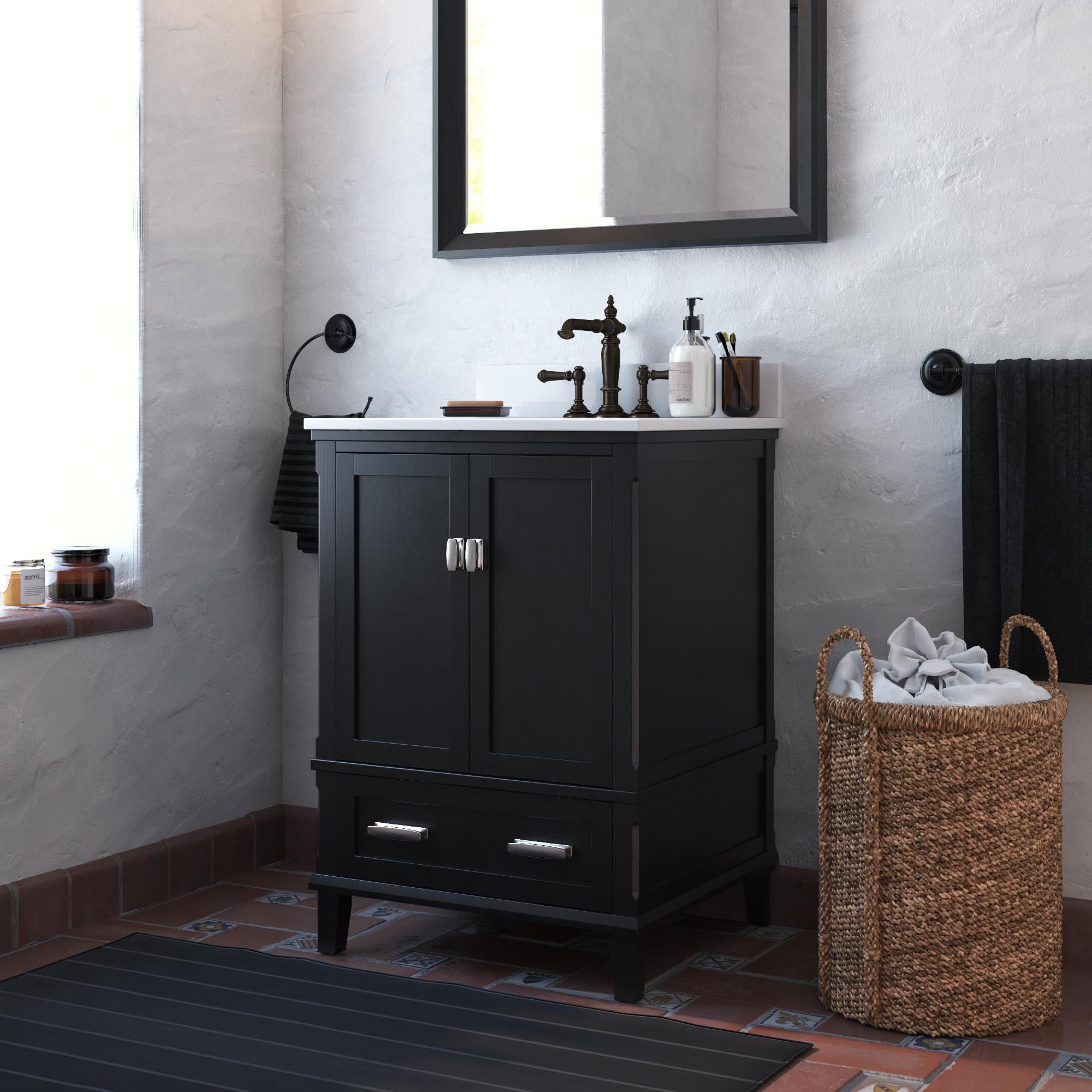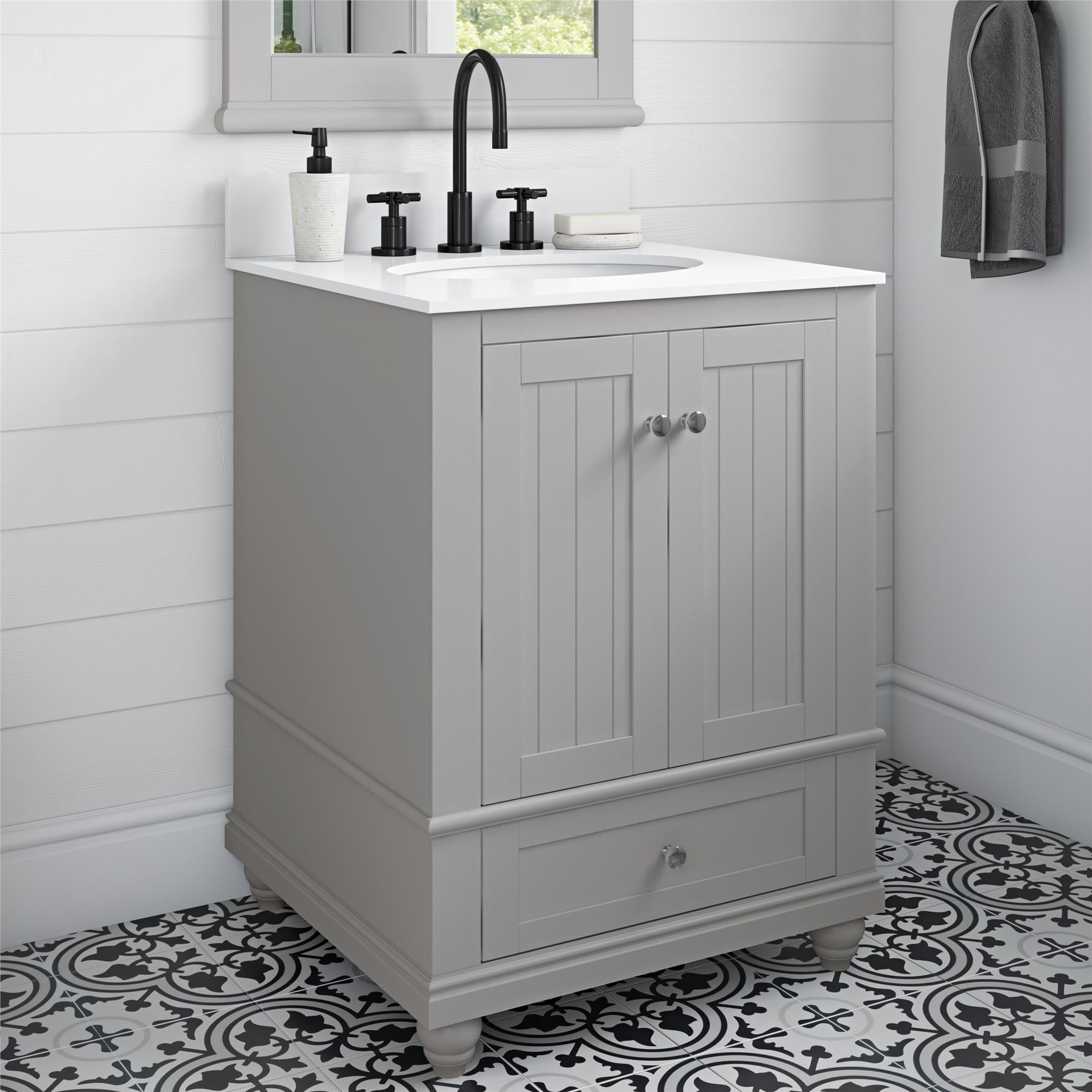Choosing the Right 24-Inch Bathroom Cabinet and Sink for Your Needs

A 24-inch bathroom cabinet and sink combo can be a stylish and practical solution for smaller bathrooms. But with so many options available, choosing the right one for your needs can feel overwhelming. This guide will help you navigate the process, ensuring you select a cabinet and sink that perfectly complements your bathroom’s dimensions and your personal preferences.
Choosing the Right Size and Style
The first step is to consider the dimensions of your bathroom and the available space for your cabinet and sink. A 24-inch cabinet is typically suitable for smaller bathrooms, but you should also measure the width of the wall where you plan to install it. Remember to factor in the depth of the cabinet and sink, as well as any plumbing fixtures.
Once you have a clear understanding of the available space, you can begin exploring different styles. Consider the overall design of your bathroom and choose a cabinet and sink that complement the existing décor. If you prefer a modern look, you might opt for a sleek, minimalist design with clean lines. For a more traditional style, consider a cabinet with ornate details and a classic sink design.
Maximizing Storage Space
A 24-inch cabinet may seem small, but you can maximize storage space with a few smart strategies.
- Utilize shelves: Many 24-inch cabinets come with adjustable shelves, allowing you to customize the space to fit your storage needs. Consider using stackable containers or baskets to keep your toiletries organized.
- Take advantage of drawers: Cabinets with drawers provide convenient storage for smaller items, such as toothbrushes, toothpaste, and makeup. Look for drawers with dividers or organizers to further optimize the space.
- Install a medicine cabinet: A medicine cabinet above the sink can provide additional storage for medications, first-aid supplies, and other essentials.
Choosing the Right Sink
The sink is an integral part of any bathroom, and choosing the right one can significantly impact your daily routine. Consider these factors when selecting a sink for your 24-inch cabinet:
- Depth: A deeper sink provides more space for washing your hands and face. However, if your bathroom is small, a shallower sink might be a better choice to prevent the cabinet from protruding too far.
- Bowl shape: Sinks come in various shapes, including round, oval, and rectangular. The shape you choose can influence the look and functionality of your bathroom. A round or oval sink is often preferred for its aesthetic appeal, while a rectangular sink can provide more space for washing larger items.
- Faucet type: The faucet should complement the style of your sink and cabinet. Consider the height and reach of the faucet to ensure it is comfortable to use. You can choose from a variety of styles, including single-handle, double-handle, and pull-down faucets.
Installation and Maintenance Tips for Your 24-Inch Bathroom Cabinet and Sink: 24 Inch Bathroom Cabinet And Sink

Installing and maintaining your 24-inch bathroom cabinet and sink unit properly ensures its longevity and functionality. It’s crucial to follow the manufacturer’s instructions and take necessary safety precautions.
Installation Process, 24 inch bathroom cabinet and sink
Installing your 24-inch bathroom cabinet and sink unit involves a few steps, including:
- Preparing the area: Clear the area around the installation spot, ensuring it’s free from obstructions. Cover the floor with a drop cloth to protect it from scratches and spills.
- Connecting the plumbing: Attach the sink drain to the cabinet’s drainpipe. Connect the water supply lines to the sink’s faucet. Make sure the connections are tight and secure.
- Mounting the cabinet: Attach the cabinet to the wall using appropriate screws and anchors. Ensure the cabinet is level and secure.
- Installing the sink: Place the sink on top of the cabinet and secure it using the provided hardware. Make sure the sink is centered and properly aligned with the cabinet.
- Final checks: Check all connections and ensure everything is secure. Turn on the water supply and test the faucet and drain to ensure they work properly.
Essential Tools and Safety Precautions
To ensure a smooth installation, gather the following tools:
- Screwdriver
- Wrench
- Level
- Measuring tape
- Pliers
- Safety glasses
- Work gloves
Always prioritize safety during the installation process:
- Wear safety glasses to protect your eyes from debris.
- Use work gloves to prevent injuries from sharp edges or tools.
- Turn off the water supply before disconnecting or connecting any plumbing lines.
- Avoid working on electrical wiring unless you’re qualified.
Cleaning and Maintenance
Regular cleaning and maintenance are crucial for maintaining the appearance and functionality of your bathroom cabinet and sink unit.
- Clean the sink and countertop regularly with a mild detergent and a soft cloth. Avoid using abrasive cleaners that can scratch the surface.
- Wipe down the cabinet doors and drawers with a damp cloth. Avoid using harsh chemicals or cleaners that can damage the finish.
- Clean the faucet regularly with a soft cloth and a mild cleaner. Avoid using abrasive cleaners that can scratch the surface.
- Inspect the drain for any clogs or blockages. Use a plunger or drain snake to clear any obstructions.
- Check the water supply lines for leaks or damage. Replace any damaged lines promptly.
Common Issues and Solutions
While 24-inch bathroom cabinet and sink units are generally durable, some common issues may arise:
- Leaking faucets: A leaking faucet can be caused by a worn-out washer or a loose connection. Replace the washer or tighten the connection to fix the leak.
- Clogged drains: Clogged drains can be caused by hair, soap scum, or other debris. Use a plunger or drain snake to clear the obstruction.
- Loose cabinet doors or drawers: Loose cabinet doors or drawers can be caused by worn-out hinges or screws. Tighten the screws or replace the hinges to fix the problem.
- Damaged countertop: Scratches or chips on the countertop can be caused by sharp objects or abrasive cleaners. Use a countertop repair kit to fix the damage.
